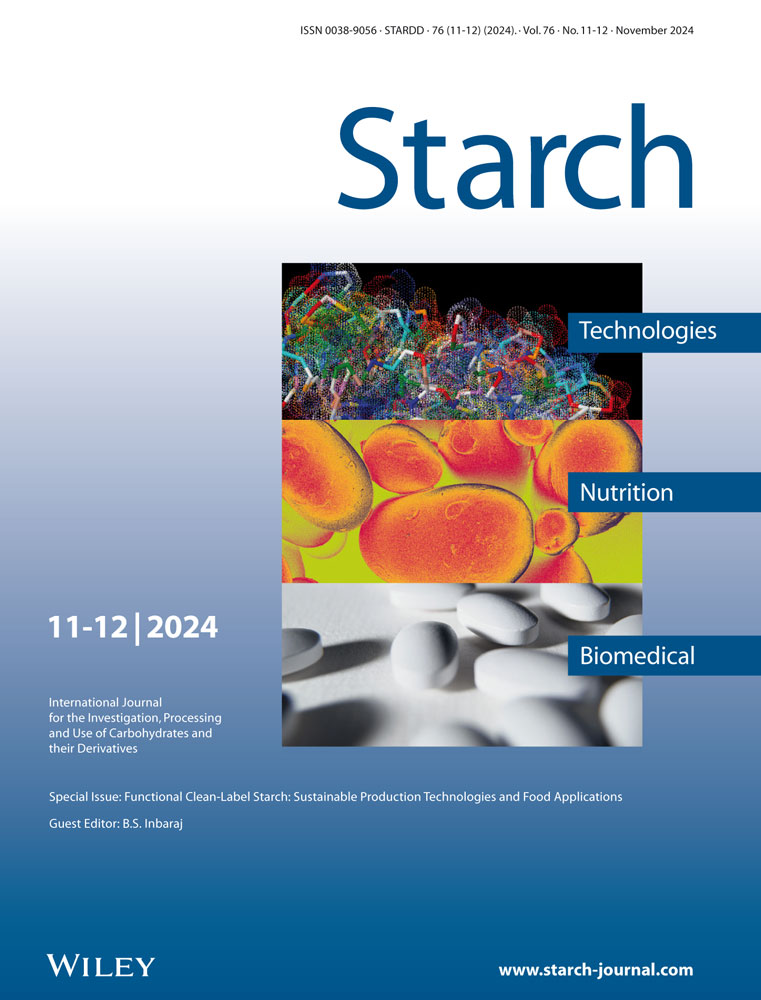Morphological, Thermal, and Physicochemical Characteristics of Nano Starch from Cañihua (Chenopodium pallidicaule Aellen)
Abstract
The objective of the study is to determine some physical and thermal properties of Cañihua (Chenopodium pallidicaule Aellen) starch of variety Ramis grown at high altitude. Starch is extracted after hydration of the grains in a solution containing 0.2% SO2 and 0.55% lactic acid for 12 h at 30 °C. Particle Analyzer, Scanning Electron Microscopy (SEM), Atomic Force Microscopy (AFM), X-Ray Diffractometry (XRD), Fourier Transform Infrared Spectroscopy (FTIR), Differential Thermogravimetry (DTG), Differential Scanning Calorimetry (DSC), and Rapid Viscosity Analyzer (RVA) are used for characterization. The results show that the starches have a polyhedral shape and 85% have diameters in the range 712–955 nm. Surface agglomerated starches have low roughness values. The XRD shows the characteristic peaks of the starches type A, relative crystallinity of 28.52%, and the transmittance ratio (1045/1022 cm−1) of 1.33 from the FT-IR. DTG shows three peaks of decomposition (203, 354, and 512 °C) and thermal stability of 251 °C. The temperature and enthalpy change of gelatinization are 62.7 °C and 3.64 J g−1, respectively. The RVA analysis shows viscosity with pasting temperature of 60.2 °C, limited peak viscosity at 95 °C, low breakdown (537 mPa s), and high setback (774.7 mPa s) during cooling. This small granule starch shows potential for applications in the pharmaceutical, cosmetic, chemical, and food industries.
Conflict of Interest
The authors declare no conflict of interest.
Open Research
Data Availability Statement
Research data are not shared.




